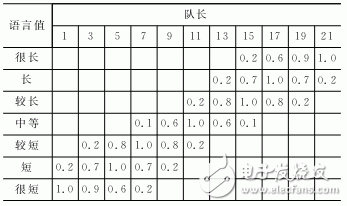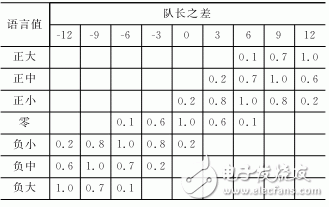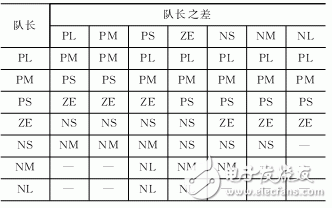Design of Fuzzy Control of Intelligent Traffic Light Based on FPGA
To address the issue of urban traffic congestion, it is essential to implement measures from both supply and demand perspectives. On the supply side, enhancing infrastructure such as road networks is crucial, while on the demand side, optimizing the use of existing roads can significantly improve efficiency. Currently, most traffic lights in Chinese cities operate with a fixed green signal ratio, which is not adaptable to the varying traffic conditions at intersections. This static approach often leads to inefficiencies and increased waiting times for drivers.
Fuzzy control technology, an important branch of intelligent control, is widely used in complex systems that are nonlinear, highly coupled, uncertain, and time-varying. It has proven effective in various control applications. Urban roads feature numerous intersections, which can be categorized into cross-shaped, X-shaped, T-shaped, Y-shaped, and multi-channel configurations. This paper focuses on cross-shaped intersections as the primary research subject.
At a plane intersection, the right of way granted to one or more traffic flows during a specific phase is referred to as a signal phase. A signal system with multiple phases is called a phase system. This article takes a two-way, six-lane, four-phase traffic light system as an example. The first phase allows east-west straight traffic, the second phase permits left turns from east-west directions, the third phase handles north-south straight movements, and the fourth phase manages left turns from north-south directions. Right turns are not controlled. The operation diagram of this system is illustrated in Figure 1.

Figure 1: Four-phase traffic operation diagram
2 Fuzzy Controller DesignA typical fuzzy controller consists of five main components: the fuzzification interface, the database, the rule base, the fuzzy inference engine, and the defuzzification interface, as shown in Figure 2.

Figure 2: Composition of the fuzzy controller
2.1 Membership FunctionTo perform fuzzification, it is necessary to define the membership functions of input variables. In this study, seven linguistic values are used: PL (Positive Large), PM (Positive Medium), PS (Positive Small), ZE (Zero), NS (Negative Small), NM (Negative Medium), and NL (Negative Large). For high accuracy, a normal distribution may be applied, but typically triangular or trapezoidal functions are sufficient. This paper uses a triangular membership function.
During the red light phase, the coil induction is set to 100 meters, with an average vehicle spacing of 5 meters. The measured queue length P is treated as a fuzzy variable. Its domain is:
P = {1, 3, 5, 7, 9, 11, 13, 15, 17, 19, 21}
Seven linguistic values are assigned, as listed in Table 1.

Table 1: P assignment table
The difference Q between the current phase queue length and the next phase queue length is used to adjust the green light duration. Its domain is:
Q = {-12, -9, -6, -3, 0, 3, 6, 9, 12}
Seven linguistic values are assigned, as shown in Table 2.

Table 2: Q assignment table
In general, the green light duration should not be less than 20 seconds to prevent vehicles from passing through without stopping, and should not exceed 60 seconds to avoid long waiting times. The additional green time is considered as the fuzzy variable g. The total additional time domain is:
T = {4, 8, 12, 16, 20, 24, 28, 32, 36}
Seven linguistic values are assigned, as detailed in Table 3.

Table 3: T assignment table
2.2 Vehicle DetectorA toroidal inductive loop is used, where a metal coil is embedded in the ground to form an LC oscillation circuit. When a vehicle passes over the coil, the inductance changes due to the presence of ferromagnetic materials. This change is detected as a pulse, allowing the system to calculate the frequency of vehicles passing through the intersection.
2.3 Controller DesignThis paper employs a two-dimensional fuzzy controller, meaning there are two input variables and one output variable. The general form of the fuzzy rules is:
IF X1 IS Ai AND X2 IS Bi THEN Y IS Ci
By applying these rules, a fuzzy control rule table is created, as presented in Table 4.

Table 4: Fuzzy Control Rule Table
3 Fuzzy Control FPGA Implementation 3.1 Introduction to Spartan3A/3ANFPGA offers advantages such as high performance, large capacity, reprogrammability, and low development cost, making it ideal for modern electronic systems. ISE is a critical design tool when working with Xilinx’s Spartan3A/3AN FPGAs. It supports all stages of development, including design entry, simulation, synthesis, place and route, BIT file generation, configuration, and online debugging [4]. This paper utilizes the EElements ISE Development Kit along with ISE10.1 software to develop the fuzzy control traffic light system, as shown in Figure 3.

Figure 3: Fuzzy control traffic light system project layout
High Frequency Ferrite Transformer,Electric Transformer,Core Type Transformer,Frequency Transformer,coilcraft transformer,electrical transformer
IHUA INDUSTRIES CO.,LTD. , https://www.ihuagroup.com